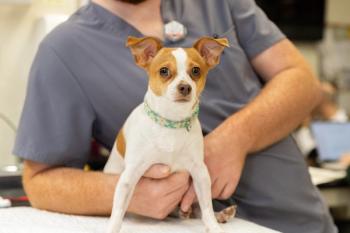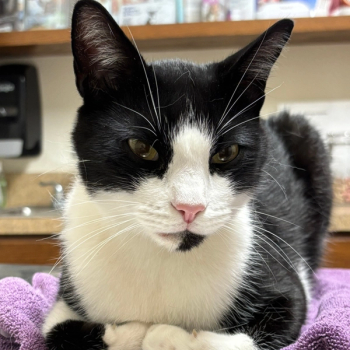
- Vetted July 2020
- Volume 115
- Issue 7
Diagnosis and management of GI motility disorders
Gastrointestinal motility disorders are a diagnostic and therapeutic challenge for many practitioners. Here’s how to narrow down the affected area so you can identify the cause and provide appropriate treatment.
Gastrointestinal (GI) motility disturbances are widely underrecognized in dogs and cats, primarily because we do not have good tools to diagnose them. Delayed transit disorders are suspected commonly by clinicians and may involve the esophagus (megaesophagus and dysmotility), stomach (delayed gastric emptying), small intestine (postoperative ileus and pseudo-obstruction), or colon (constipation and megacolon).
This two-part article discusses general causes of GI motility disorders affecting the esophagus to the colon, and offers insight for appropriate diagnostic evaluation and treatment options for these disturbances. This article covers the GI tract as a whole; a second article will focus on esophageal diseases that cause motility disturbances.
Gastric diseases and hypomotility
Vomiting is the predominant clinical sign in dogs and cats with gastric motility disorders. Gastric mucosal disorders may cause motility disturbances due to hypomotility or pyloric outflow obstruction. The most common causes of outflow obstruction are foreign bodies and/or intraluminal masses (e.g., mucosal and/or muscular proliferative diseases), whereas infiltrative diseases may cause generalized hypomotility. Gastric dilatation and volvulus may also cause outflow obstruction but is not further discussed here. Gastric hypomotility and defective propulsion may also be associated with diverse inflammatory conditions and metabolic/systemic diseases, such as chronic gastritis, inflammatory bowel disease (IBD), Helicobacter spp infection, ulceration/erosions, pancreatitis, hypokalemia, hypocalcemia and hypoadrenocorticism.
Gastric retention (i.e., retained gastric contents eight to 10 hours after meal ingestion) has two causes: gastric hypomotility and pyloric outflow obstruction. With pyloric outflow obstruction due to foreign bodies (an especially common cause in young animals; Figure 1), an acute onset of vomiting typically occurs. These patients may be painful in the cranial abdomen on physical examination. Therefore, clinicians should take the time to rule in or out a foreign body with a diagnostic workup that includes abdominal imaging (survey radiographs for radiodense objects), with barium contrast if necessary to demonstrate a filling defect if the object cannot be visualized on survey radiographs (Figure 2).
Contrast radiography can be beneficial if ultrasound is unavailable or unrewarding. Gastroscopy serves to confirm the cause of obstruction, and can help with removing the obstructing object and/or sampling mass lesions via exfoliative cytology or forceps biopsy (Figure 3). With infiltrative disease (e.g., nonspecific chronic gastritis, IBD), intermittent episodes of vomiting food and bile, hematemesis, melena, abdominal discomfort and weight loss may occur. In patients with chronic gastritis, retained gastric fluids and ingesta noted on gastroscopy may be a clue that a concurrent motility disturbance is present (Figure 4).
Keep in mind that gastric motility disturbances other than mechanical obstruction (e.g., delayed gastric emptying) have diverse causes, including mucosal inflammation (e.g., chronic gastritis, IBD), infection (gastric Helicobacter spp), and dysmotility of unknown cause. Delayed gastric emptying has also been associated with with numerous secondary conditions, including hypokalemia, metabolic disorders (e.g., Addison’s disease, uremia, diabetes mellitus), use of concurrent drugs (e.g., anticholinergics), and acute abdominal inflammation.
Treatment of gastric motility disorders is as follows:
- Mechanical obstruction: gastric polyp (polypectomy), tumor (biopsy/gastrectomy +/- chemotherapy), foreign body (endoscopic/surgical removal)
- Gastric emptying disorders: inflammation/IBD (hydrolyzed diet +/- prednisone), infection (antibiotics), idiopathic (hydrolyzed/ultra-low-fat diet + prokinetic drugs [e.g., cisapride, ranitidine, erythromycin])
Small and large intestinal motility disturbances
As noted earlier, intestinal motility disturbances can be difficult to document due to inadequate diagnostic tools that yield variable results. For example, methods to measure intestinal transit may include barium contrast studies (with or without food), ultrasonography (very operator dependent), and wireless motility capsule. If a structural disorder (e.g., mechanical obstruction) is suspected, it is advisable to start with survey abdominal radiography followed by contrast radiography to rule out specific intestinal diseases.
Ultimately, identifying and treating the underlying disease process is key to clinical remission. Enteroscopy may be useful for removal of proximal duodenal foreign bodies (Figure 5). Clinical signs suggestive of small intestinal diarrhea include large stool volume, watery diarrhea, fetid smell, presence of melena and systemic signs (hyporerexia, ravenous appetitie and/or weight loss); whereas normal stool volume, hematochezia, mucoid stools and/or frequent attempts to defecate are most characteristic of large intestinal diarrhea.
Intestinal obstruction
Obstruction of the small intestine is a common reason for dysmotility, especially with luminal foreign bodies. While these objects can lodge anywhere along the small or large intestine, many are diagnosed as lodged jejunal foreign bodies. Linear foreign bodies cause obstruction because of their ability to gather/pleat the intestine to cause partial or complete obstruction, and potential perforation, if not resolved. Intussusception in younger dogs and cats (< 1 year of age) can also cause bowel obstruction (Figure 6).
Patients with complete intestinal obstruction often present with acute signs of vomiting, whereas chronic clinical signs (vomiting, diarrhea hyporexia, and/or weight loss) are most consistent with chronic obstructive disorders. Other causes of intestinal dysmotility include dysautonomia, postoperative ileus, viral enteritis, opioid-induced dysmotility, and the rarely occurring idiopathic pseudo-obstruction (i.e., intestinal dilation with no evidence of mechanical obstruction).
Parvovirus
Canine parvovirus can cause hypomotility (functional ileus) of the small intestine as a consequence of severe intestinal inflammation/necrosis secondary to viral infection. Because parvovirus is viral in origin, the mainstay of therapy is supportive care. By supplementing nutrition, correcting hydration and providing other supportive measures (e.g., anti-emetic therapy), motility disturbances and clinical remission can be addressed adequately. With infiltrative disease, such as IBD, alimentary lymphoma, and GI histoplasmosis, obtaining mucosal biopsies will generally yield a definitive diagnosis and the need for specific therapy.
Constipation and megacolon
Colonic motility disturbances are characterized predominantly by constipation and megacolon. Constipation denotes infrequent or difficult defication with the passage of dry feces. The causes of constipation are numerous and include intra- or extraluminal mechanical obstruction (bones, hair, neoplasia, pelvic fracture), neuromuscular dysfunction (dysautonomia, lumbosacral disease), metabolic/endocrine disease (hypokalemia, hypothyroidism), and medications (opioids, anticholinergics). Megacolon is characterized by excessive colonic dilation thought to be associated with functional disurbances in colonic smooth muscle.
Treatment strategies for colonic dysmotility are aimed at removal of the underlying cause; adding dietary fiber; using enemas, stools softeners, or manual extraction of hard feces; and administering promotility drugs (ciasapride, erythromycin, misoprostil). When mass lesions present in the colon are causing partial obstruction, the main differentials are adenocarcinoma and inflammatory polyp, both of which usually can be removed (surgically or via endoscopy) without further complications.
Medical therapy for GI motility disturbances
The primary drug choices for GI motility disorders include agents that stimulate intestinal smooth muscle. These include metoclopramide, cisapride, erythromycin, ranitidine, and misoprostol, each of which has a different mechanism of action. For gastroesophageal reflux and gastric hypomotility, metoclopramide (a dopamine antagonist) and cisapride (a serotonin 5-HT [hydroxytryptamine] agonist) are the primary therapeutic choices because they promote gastric emptying and increase lower esophageal sphinter tone to prevent reflux. Metoclopramide will have limited effect distal to the pylorus but will likely facilitate gastric contractions and movement of fluid/ingesta through the pylorus. Because cisapride affects the smooth muscle of the entire GI tract, it may be beneficial in treating different causes of GI hypomotility involving the stomach and intestines.
For small intestinal dysmotility, cisapride, ranitidine and erythromycin are good treatment options. Ranitidine is a histamine 2 antagonist but has prokinetic activity, especially when treating small intestinal hypomotility. Erythromycin works via motilin-like activity and has prokinetic activity at sub-antimicrobial doses; it is also useful for stimulating smooth muscle of the small intestine. Occasionally, dogs with small intestinal IBD that are experiencing continued diarrhea despite diet and immunosuppressive therapy will respond to a promotility drug, suggesting that infiltrative diseases are associated with dysmotility. A suggested trial period of four to six weeks is recommended in these cases.
For colonic dysmotility/constipation, cisapride is recommended as a first choice agent. Unfortunately, there are few effective promotility medication options for stimulating colonic motility. Pilot study data suggest that misoprostil following meal ingestion may stimulate colonic motility in dogs.1
Dr. Jergens is an internist and holds the Donn E. and Beth M. Bacon Professorship in Small Animal Medicine and Surgery, and serves as associate chair for research and graduate studies in the Department of Veterinary Clinical Sciences at Iowa State University College of Veterinary Medicine.
Reference
1. Fioramonti J, Frexinos J, Bueno L. Oral prostaglandin E analogues induce intestinal migrating motor complexes after a meal in dogs: Evidence for a central mechanism. Gastroenterology. 1990;98(4):888-893.
Articles in this issue
over 5 years ago
Managing immune-mediated hemolytic anemiaover 5 years ago
Medium-chain triglycerides and seizure control in dogsover 5 years ago
Considerations for adding a dedicated veterinary dental spaceover 5 years ago
Neonatal nursing care for high-risk puppies and kittensover 5 years ago
Pivot during the pandemic for success on the other sideover 5 years ago
Mobility matters: nutritional management of canine joint diseaseabout 6 years ago
3 erroneous assumptions veterinarians makeabout 6 years ago
Be a veterinary practice builder, not a practice fillerNewsletter
From exam room tips to practice management insights, get trusted veterinary news delivered straight to your inbox—subscribe to dvm360.





